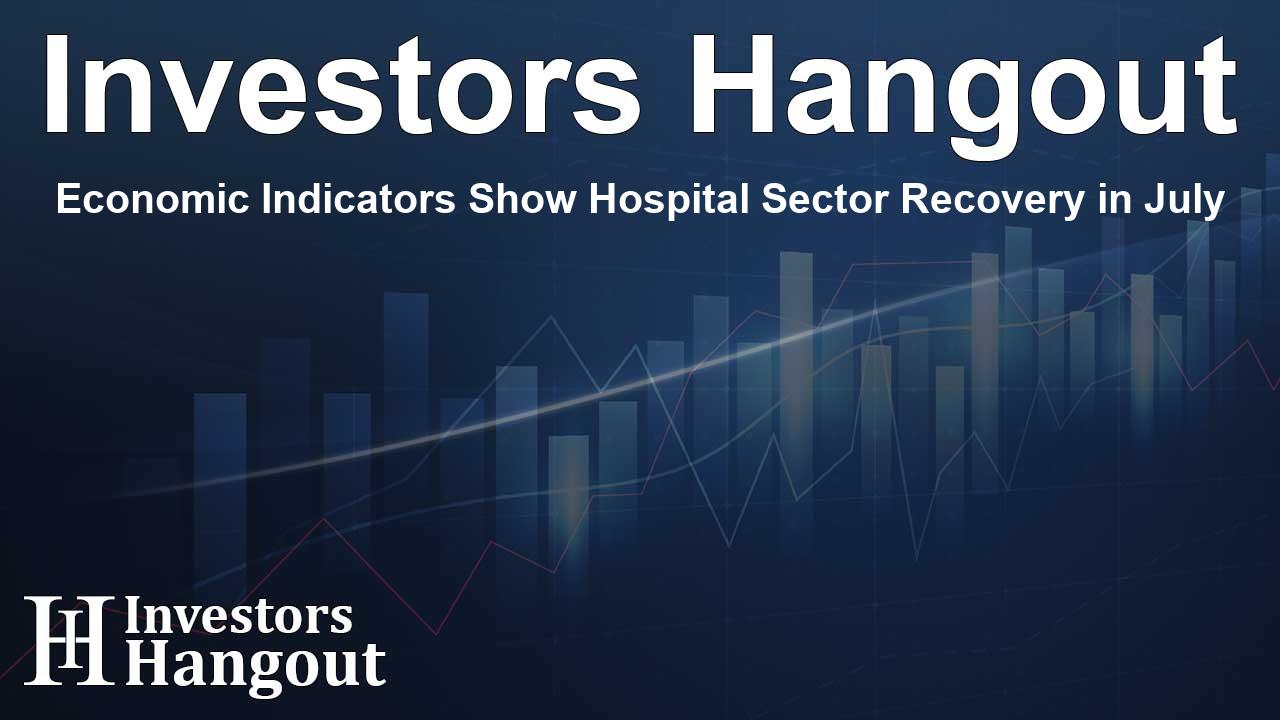Economic Indicators Show Hospital Sector Recovery in July

Insights into the July Hospital PMI Report
The Hospital Purchasing Managers' Index (PMI) has shown promising signs of recovery in the latest report, indicating a positive shift in the hospital subsector's economic activity. After a brief contraction, which lasted for one month, the Hospital PMI rebounded to 51 percent in July, a notable increase from June's 49 percent. This growth follows a period of 21 consecutive months of expansion prior to the downturn. The report, released by the Institute for Supply Management, emphasizes the resilience of the hospital sector amidst challenges.
Key Highlights of the Hospital PMI
The July report reveals several important metrics. The Business Activity Index remains in expansion territory for the ninth consecutive month, suggesting a steady increase in operational activities. Moreover, the New Orders Index has maintained an unchanged status, while the Employment Index has emerged from contraction territory, indicating stabilized hiring trends. The results suggest hospitals are beginning to stabilize their operations after fluctuations due to changing economic conditions.
Employment Trends and Staffing Challenges
Significantly, employment within the sector has shown improvement. Executives from various hospitals report a gradual increase in hiring, especially for clinical staff. However, challenges remain, with many institutions implementing hiring freezes for nonclinical roles, preparing for potential financial constraints from Medicaid funding cuts. As the market continues to evolve, staffing levels are being closely monitored to ensure optimal resource management.
Impact of Tariffs on Hospital Operations
The report also highlights concerns regarding government funding and tariffs, which are becoming critical factors for hospital executives. Respondents noted that certain prices are climbing due to tariffs, with expectations of rising costs for supplies as the fiscal year progresses. Many hospitals brace for these changes by adjusting their inventory levels and procurement strategies—focusing on products that may be affected by these tariffs while also seeking ways to improve efficiency.
Analyzing Sub-Indexes and Overall Performance
Among different indexes, the Supplier Deliveries Index remained unchanged, which points to stable delivery performance despite past fluctuations. The Case Mix Index dipped to 46 percent, indicating a decrease in patient mix—a crucial element in financial planning for hospitals. Conversely, the Days Payable Outstanding Index has shown improvement, suggesting that hospitals are managing their payment cycles more effectively.
Technological Investments and Future Strategies
Technological investments continue to play a significant role in operational efficiency. The report indicated a stable Technology Spend Index, reflecting ongoing investments in IT infrastructure. Hospitals are focusing on enhancing their procurement processes, including the automation of the procure-to-pay system, to streamline operations and cut unnecessary costs. By adopting new technologies, hospitals aim to tackle appointment wait times and improve patient care delivery.
Conclusion and Future Outlook for Hospitals
As we look ahead, the future of the hospital sector seems cautiously optimistic. With the July PMI indicating a return to growth, industry leaders have signals of recovery and hope in the face of ongoing challenges. The healthcare landscape is complex, and while there are hurdles ahead—especially regarding economic policies and funding changes—the adaptability of the hospital sector showcases its potential for regrowth and innovation.
Frequently Asked Questions
What does a Hospital PMI of 51 percent indicate?
A Hospital PMI of 51 percent signals that the hospital sector is expanding, showing recovery from previous economic contractions.
How does the Employment Index impact hospital operations?
When the Employment Index rises, it typically indicates an increase in hiring, which can lead to improved patient care and operational efficiency.
What role do tariffs play in hospital economics?
Tariffs can affect supply costs, leading hospitals to adjust budgets and procurement strategies to manage increasing expenses effectively.
What future trends are hospital leaders focusing on?
Hospital leaders are focusing on technological investments, improving procurement processes, and addressing changes in patient care delivery to remain competitive.
How often is the Hospital ISM Report published?
The Hospital ISM Report is published monthly, providing vital insights into the economic health of the hospital sector.
About The Author
Contact Owen Jenkins privately here. Or send an email with ATTN: Owen Jenkins as the subject to contact@investorshangout.com.
About Investors Hangout
Investors Hangout is a leading online stock forum for financial discussion and learning, offering a wide range of free tools and resources. It draws in traders of all levels, who exchange market knowledge, investigate trading tactics, and keep an eye on industry developments in real time. Featuring financial articles, stock message boards, quotes, charts, company profiles, and live news updates. Through cooperative learning and a wealth of informational resources, it helps users from novices creating their first portfolios to experts honing their techniques. Join Investors Hangout today: https://investorshangout.com/
The content of this article is based on factual, publicly available information and does not represent legal, financial, or investment advice. Investors Hangout does not offer financial advice, and the author is not a licensed financial advisor. Consult a qualified advisor before making any financial or investment decisions based on this article. This article should not be considered advice to purchase, sell, or hold any securities or other investments. If any of the material provided here is inaccurate, please contact us for corrections.
